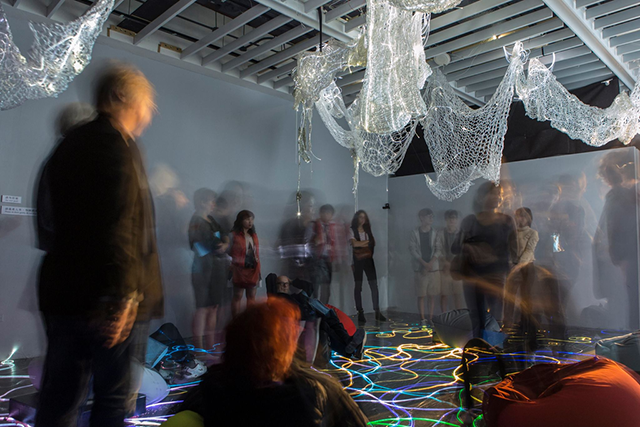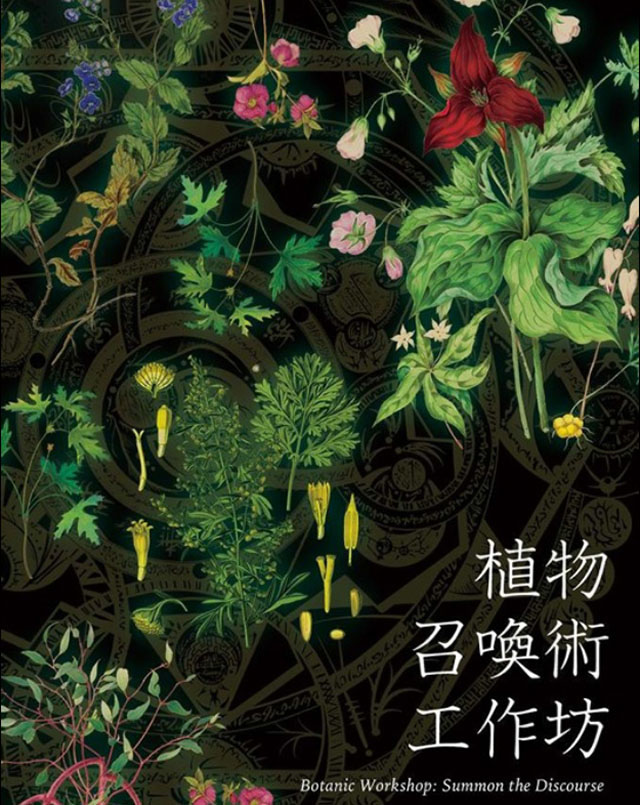Please join us for a small symposium on New Media Research in Taiwan.
Our special guest speaker, Prof. Wendy Lai, the director of transArt NCTU and her colleagues will give a series of talks to share their researches and the current New Media Researches in Taiwan, a sci-tech island.
Four talks will take place in Room 420, 4th Floor, Media Lab(Miestentie 3, Otaniemi Campus) 7.9.2015 from 10:00 to 15.00.
You are all very welcome!
Please contact the Coordinator, doctoral candidate, Chen hung.chen@aalto.fi if you have questions.
Introduction of the presentations:
TITLE
Dance-technology: Uncertainty Based on Deterministic System
TIME
10.30-10.45
SPEAKER
Dr. Chi-Min HSIEH, Assistant Professor/ transArt NCTU team, Institute of Applied Arts, National Chiao Tung University, email: chimin.hsieh@gmail.com
ABSTRACT
In this talk, we will present a branch research project in dance-technology, focusing on “uncertainty based on deterministic system”, i.e. quasi-chaos. We distinguish the fundamental differences in comparison with Merce Cunningham’s “chance operation based on dice and I-Ching”. Secondly, we will share our on-going performance “Impermenance”. The work is a combination of dancing, interactive technology, and visual arts, which integrates powerful body languages and skillfully designed group dances with elegantly flowing images produced by fluids simulation and complex changes of communities imitated by flocks simulation. It explores the “permanence” and “impermanence” of life through the observation of various flow phenomena in the nature as well as intricately changing interpersonal relationships—either be it crazy love, dependence, competing, betraying or vacillating. Lastly, we will discuss the dichotomy of “usual” and “unusual.” While the usual represents what is accumulating slowly in everyday life, the unusual reflects the yearning for escaping from the present moment. Whichever can be considered another mode of being of “impermanence.”
TITLE
Social Design & Media Maker Project
TIME
11.00-11.15
SPEAKER
Dr. Chun-Cheng Hsu, Associate professor/ transArt NCTU team, Department of Communication and Technology, National Chiao Tung University, Taiwan chuncheng@mail.nctu.edu.tw
TITLE
Optical Fibers with Micro Physical Sensors in Art and Design
TIME
14.05-14.20
SPEAKERS
Dr. Wen-Shu Lai, Associate Professor/Director of transArt NCTU team Institute of Applied Arts, National Chiao Tung University, Taiwan wndylai@gmail.com
Dr. Hsi-Pin Ma, Associate Professor/NTHU EE Cognitive Applications R&D Group. Department of Electrical Engineering, National Tsing Hua University, Taiwan hp@ee.nthu.edu.tw
ABSTRACT
This research is to explore the innovative applications of optical fibers with the ECG/RESP sensor technology in art as well as its emerging aesthetics derived from the application. An optical fiber is capable of transmitting messages. Through integrating optical fibers with the ECG/RESP sensor technology, we constructed an interactive clock titled ‘Clock Inside Out’. The physical data from the audience’s breathing and heartbeats are transformed into a stream of light by real-time signal processing and represent the second hand of the clock. The ‘Clock Inside Out’ not only reflects the existence of the audience, but also coexists with the audience in reality. Therefore, both a natural sensory world and temporality can be experienced at the same time. Besides the analysis of the work, we also discuss the aesthetic questions arising from it. Lastly, a conclusion of the new meanings of the ‘Clock Inside Out’ from the phenomenological point of view is drawn.
TITLE
Botanic Workshop: Summon the Discourse
TIME
14.35-14.50
SPEAKER
Dr. Yueh-Tuan Li, Institute of Applied Arts / transArt NCTU team
ABSTRACT
The workshop: “Botanic Workshop: Summon the Discourse” was hosted by the transArt NCTU team in July 2015. Three artists are invited to lead the students from brainstorming to final presentations. The main goal of the workshop is to rethink the definition of plants, including whether plants have consciousness and the ability to communicate, whether plants should be considered to have rights as human beings do. With that in mind, students are expected to respond to the following questions in their final presentation: What kind of ‘plants’ will exist in the current world that would appear half-human and half-plant? And how will humans interact with them? Why will these ‘plants’ appear? How will they look like? What will they do? What is their relationship with human? What is their relationship with this world? The final presentations are therefore the team-effort artworks that would invite people to communicate with the plants.





